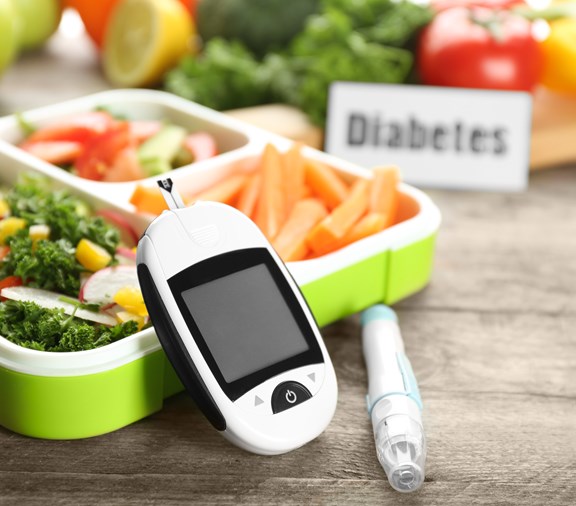
Six Tips for Keeping Your Diabetes in Check
August 8, 2022
It’s almost time for fall – and the start of a new school year. If you or child have diabetes, this can be a good time to get up to date with your recommended diabetes care.
- Visit your doctor for a checkup that includes the following:
|
|
Adult |
Child |
|
Hemoglobin A1c lab test |
Usually every 3-6 months |
Usually every 3-6 months |
|
Referral for a diabetic eye exam |
Usually every one to two years, as recommended by your doctor |
Often starting at age 11, or as recommended by your doctor |
|
Complete foot exam to check for nerve damage |
At least once a year |
Usually starting at age 10 |
|
Urine test to check for kidney damage |
Usually once a year |
Usually starting at age 10 |
|
Blood pressure check |
At every visit |
At every visit (if diagnosed with high blood pressure) |
|
Cholesterol test |
Usually once a year |
Usually once a year |
|
Other lab tests |
As determined by your doctor |
As determined by your doctor |
- Talk with your doctor about a Diabetes Action Plan for you or your child that includes the following:
- Target blood sugar ranges and instructions about when to check your blood sugar, if needed.
- Low blood sugar symptoms and how to treat low blood sugar.
- High blood sugar symptoms and how to treat high blood sugar.
- Make sure your child knows the signs of low blood sugar. They should tell their teacher and school nurse if they think they might have high or low blood sugar.
- A list of diabetes medicines.
- A plan for healthy eating, including snacks and meals at school.
- Make sure your child has snacks on hand in case of a low blood sugar emergency.
- How to safely exercise and stay active, including playing sports at school.
- If your child participates in after-school activities, tell the adults leading the activities about the Diabetes Action Plan.
- What to do if you feel sick.
- Stay up to date with vaccines, including your yearly flu shot and recommended COVID shots (including boosters).
- Get a medical alert bracelet or necklace that lists your diabetes diagnosis, and wear it every day. If your child takes insulin, get a medical alert bracelet or necklace that lists their diabetes diagnosis, and remind them to wear it every day.
- Ask your doctor for refills on blood sugar testing and medication supplies, if needed. Ask your child’s doctor for extra blood sugar testing and medication supplies to keep at school.
- Talk with your doctor about cholesterol medicine (“statins”). This medicine is usually recommended for people age 40-75 with diabetes, and for younger people with diabetes and other risk factors.
Parkland Community Health Plan’s free Be in Control program offers educational materials and resources to help members manage their diabetes. Members can earn rewards for completing their diabetic (retinal or dilated) eye exam (for members 15 years and older) and their HB/A1c blood test once every 6 months (for ages 18 and older). Call 214-393-7003 and speak to someone on our condition management team.




